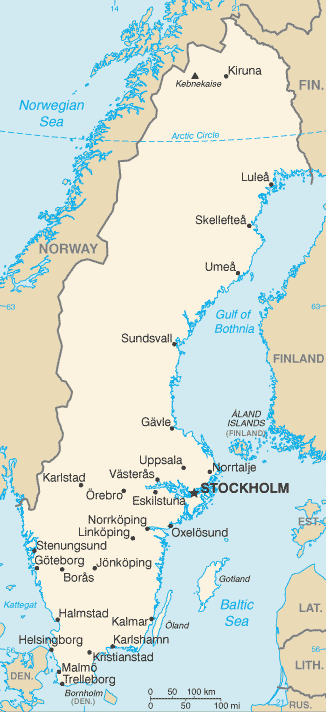Drug policy
- The main goal of Sweden’s drug policy to have a society free from narcotics and doping. It also aims to reduced medical and social harm from alcohol, as well as reduce tobacco use.
- Its key precept is that every person has the right to the best possible physical and mental health.
- It supports restrictions on personal freedoms for the benefit of public health. Measures include the Swedish alcohol monopoly, age limits for the purchase of alcohol and tobacco, and the criminalisation of narcotics and doping.
Treatment and Recovery Services
- Enhancing quality of care and a client-centred approach are central pillars to the Swedish approach to substance use treatment.
- Drug treatment is organised by the social services in local communities (specialised outpatient clinics), hospitals (providing detoxification) and therapeutic communities.
- Compulsory treatment (up to a maximum of six months) is provided by The National Board of Institutional Care in special cases.
- Almost all outpatient services are provided by municipalities, county councils or the state. Inpatient services are usually provided by municipalities in private and NGOs.
- County councils are responsible for detoxification facilities and OST. They are also responsible for the treatment of psychiatric comorbidities.
- Municipalities have overall responsibility for long-term rehabilitation through social services.
- OST can be prescribed by a medical doctor.
- Methadone, which was introduced in 1967, and buprenorphine-based medications, which was introduced in 1999, are the only officially recognised pharmaceutical treatments for OST.
- The national OST guidelines favour buprenorphine- based medication provision.
Prevention Services
- All 21 counties have a county coordinator who oversees the synchronisation and promotion of evidence- based prevention measures at a regional and local level.
- In 2015 a total of 16 counties had substance use prevention strategies in place.
- Municipalities are also responsible for implementing prevention measures. Almost all have appointed a full-time/part-time drug coordinator for illicit drug prevention.
- Prevention interventions encompass a wide range of complementary approaches.
- School-based prevention interventions have an important role to play. They are often implemented to promote a healthy school environment and address both licit and illicit substances.
- A number of interventions focus on the development of a child’s social and emotional capacity. Others target both parents and children.
- Several community-based programmes at the municipal level look to provide alternative leisure activities and ensure safe recreational settings.
- Selective prevention activities mostly focus on early detection of individuals suspected of drug abuse, as well as programmes for children whose parents violent, suffer from mental health problems, and/or are dependent on alcohol or drugs.
- An increasing number of recreational settings, for example clubs and restaurants, have adopted environmental prevention measures. These include norm-setting among staff and the use of controlling initiatives that aim to limit access for those under the influence of drugs.
- Cannabis use prevention among young people is one of the key foci for the current national strategy. Additional funding has recently been allocated to special projects, training and networking in this area.
